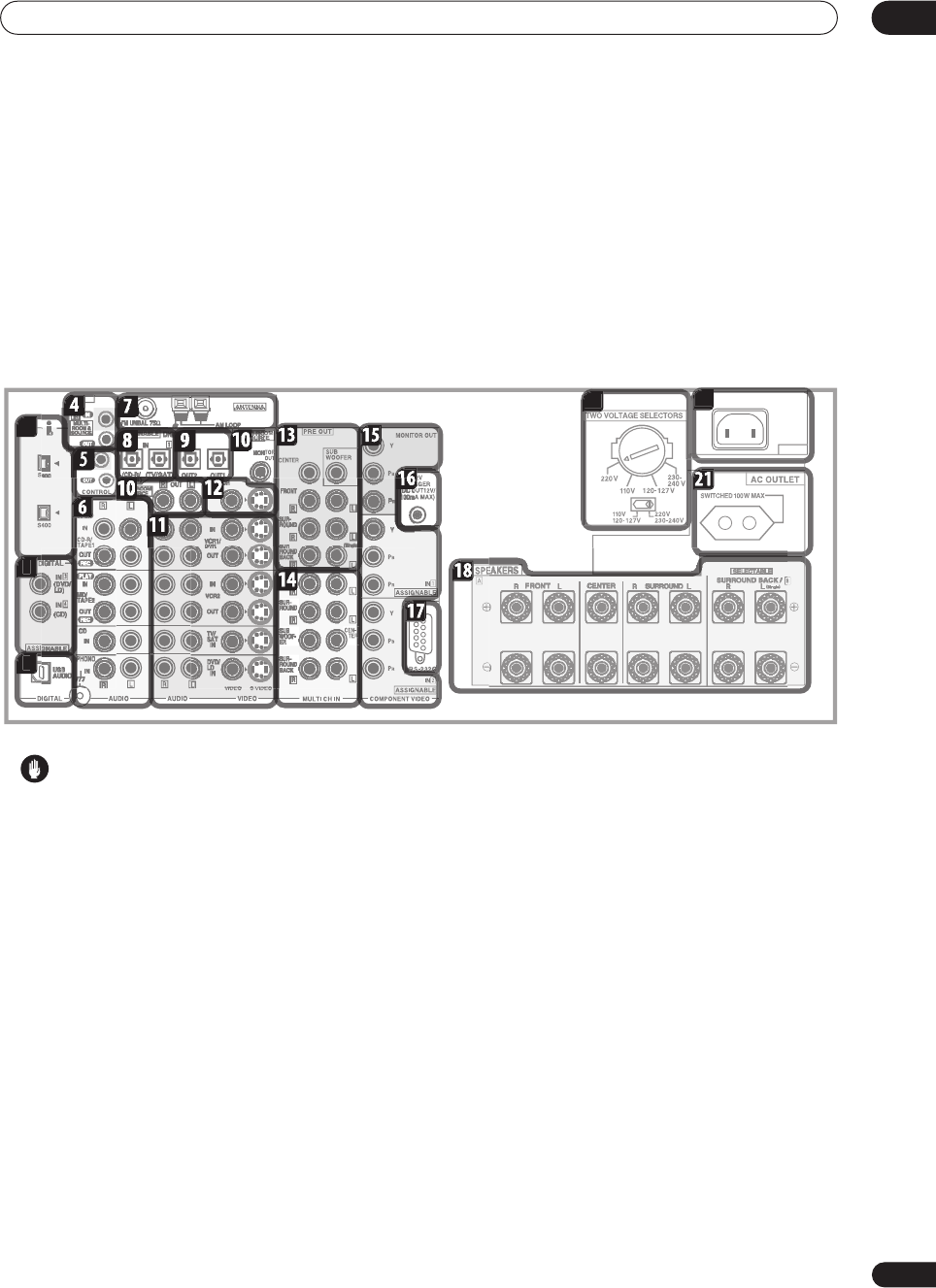
Connecting your equipment
03
15
En
Chapter 3
Connecting your equipment
This receiver provides you with almost limitless possibilities for connecting your audio/video system, but it doesn’t
have to be difficult. Depending on your needs, you could be up and running in no time after a few simple connections.
This section has been designed so that you can read through this short introduction, then jump to the specific
connections that you need to make. For a basic home theater setup, you may only need to look through the TV, DVD
and speaker connections.
Rear panel
Caution
• Before making or changing the connections, switch
off the power and disconnect the power cord from the
power outlet. Plugging in components should be the
last connection you make with your system.
1 i.LINK connectors
Two S400-type i.LINK connectors allow you to connect
this receiver to other compatible i.LINK audio devices for
high-resolution, multichannel digital audio input/output.
See
Using the i.LINK interface
on page 76 for connection
details.
2 Digital audio coaxial inputs
Two coaxial digital audio inputs for connecting digital
audio sources to this receiver. All the inputs are freely
assignable to input functions for maximum flexibility.
• If a connected component does not correspond to
the input function (
DVD/LD
, etc.), see
Assigning the
digital inputs
on page 81 to assign it properly.
3 USB audio input
The USB audio input allows you to use your PC as a
playback source for audio. See
Using the USB interface
on page 78 for connection details.
4 IR input/output
An IR connection allows you to connect an external
remote control sensor, when your component system is
in a closed cabinet or shelving unit, for example. See
Connecting an IR receiver
on page 75 for connection
details.
5 Control input/output
Mini-plug terminals for connection to other Pioneer
components to enable you to control all your equipment
from a single remote sensor. See
Operating other Pioneer
components with this unit’s sensor
on page 65 for
connection details.
6 Stereo analog audio source inputs/outputs
Four sets of analog audio jacks for connection to audio
sources such as CD players, tape decks and turntables.
The
CD-R/TAPE1
and
MD/TAPE2
functions also feature
outputs for recording. See
Connecting analog audio
sources
on page 26 for connection details.
• The grounding (
) terminal is for use with turntables
that require it. See
Connecting analog audio sources
on page 26 for connection details.
7 Antenna terminals
Connections for AM and FM radio antennas. See
Connecting antennas
on page 30 for connection details.
AC I
N
1
2
3
2
2
20
2
1
19
1
VSX-AX5Ai.book 15 ページ 2004年6月2日 水曜日 午後3時27分


















